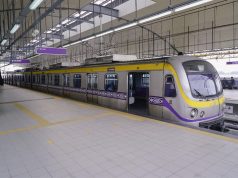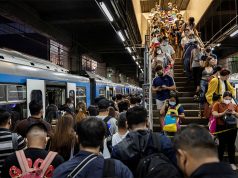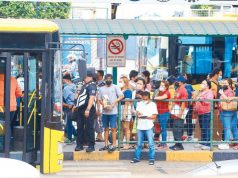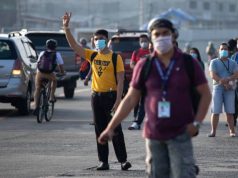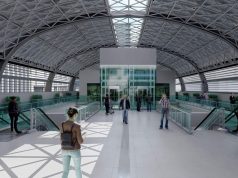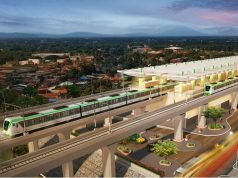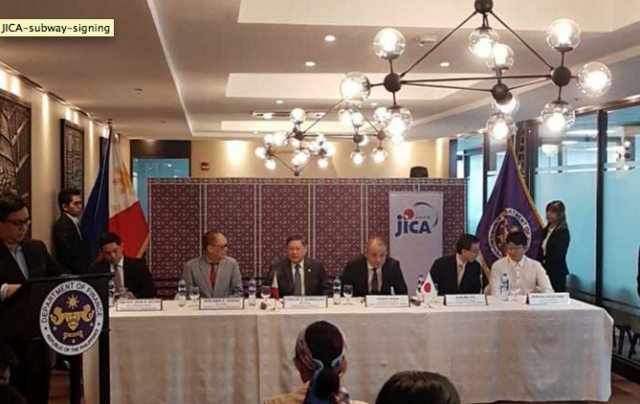
MANILA – The Philippines and the Japan International Cooperation Agency (JICA) signed on Friday the first tranche of the loan agreement for the Metro Manila subway Phase 1.
The loan amounts to 104.53 billion yen, or $935 million, and carries a 0.1% interest rate per annum for non-consulting services and 0.01% per annum for consulting services payable in 40 years with a 12-year grace period.
The loan documents were signed by Finance Secretary Carlos G. Dominugez III, representing the Philippine government, and JICA Chief Representative Yoshio Wada. Also present during the signing ceremony were Budget Secretary Benjamin E. Diokno, former JICA Chief Representative Susumo Ito, Department of Transportation Undersecretary Timothy John R. Batan, and Japanese Financial Attache Noboru Kageyama.
The first phase of the Metro Manila Subway project will run from Mindanao Avenue in Quezon City through the FTI in Taguig City and end at the Ninoy Aquino International Airport in Parañaque City. The subway will help decongest traffic on EDSA and connect major business centers in Metro Manila to the country’s premier international gateway.
The project includes a depot in Valenzuela, electro-mechanical systems and rolling stock, and the establishment of a Philippine Railway Institute.
“The Institute will provide training as well as do research and development on regulation, train operations and maintenance. This will build a corps of expert train personnel to manage not only the subway system but all the commuter rail lines of the country. It is about time that our commuter lines be run by real experts,” said Mr. Dominguez.
“The detailed engineering design for the subway, which is being funded under a JICA grant, is currently ongoing. The design includes flood management features and applies the best seismic technology there is. We will acquire tunnel boring equipment to hasten the construction period. The Philippine government commits to working on this project to get it done at the soonest possible time,” he added.
Four tranches of loans are expected to complete financing for the whole project.
This tranche covers the first three stations of the subway, Mindanao Avenue-Quirino Highway, Tandang Sora, and North Avenue.
The overall project costs about P356.96 billion pesos or $7.05 billion, according to the Finance department.
Mr. Dominguez said that the subsequent loan tranches will follow the implementation of the first part of the project.
The Transportation department’s Mr. Batan said that his department — the implementing agency of the Subway — targets to begin groundbreaking by “December this year.”
Mr. Dominguez meanwhile said that the government aims to begin the operation of the stations by May 2022, and the entire central zone by 2025, including the construction of commercial space for lease in the subway stations that will “help defray the cost of operating this facility.”
He added that the government is planning to include two more areas including a North Zone that will extend to Bulacan and a South Zone that will extend to Cavite.
“I am confident that the succeeding administrations will get this done,” said Mr. Dominguez.
JICA’s Mr. Wada meanwhile said that the project is a “game changer,” noting it would cut travel time from Quezon City to Parañaque to 30 minutes from an hour and a half.
“This constitutes seamless mobility of goods and people in Mega Manila and in some areas transport infrastructure development,” he said.
“The timely completion of the subway project will crown the aggressive infrastructure program the administration of President Duterte has initiated. It will likewise crown the achievement of the economic diplomacy the Duterte administration has undertaken,” Mr. Dominguez said.
Aside from the subway, Japan is also funding the Cavite Industrial Area Flood Risk Management Project, the Arterial Road Bypass Project Phase 3, the Malolos-Clark Railway Project, the Philippine National Railways South Commuter and South Longhaul Project, and the Maritime Safety Capability Project 2.
The loans were given imprimatur by Japanese Prime Minister Shinzo Abe during his visit to the Philippines in January, when he offered some 1 trillion yen, or $9 billion in Official Development Assistance (ODA) throughout the current administration’s term. — Elijah Joseph C. Tubayan




